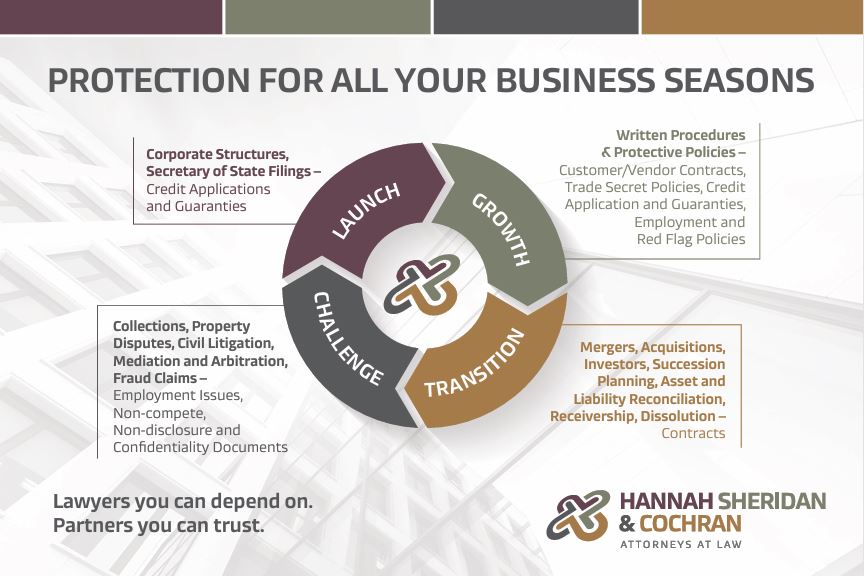In an uncertain and ever-changing economic landscape, businesses are motivated to protect their economic interests,…

Bankruptcy Preference Claims 101
For the past 5 years or so, the economic recovery resulted in fewer business bankruptcies. For many creditors, this lull provided a needed opportunity not to consider what happens when a customer files a bankruptcy petition. While the numbers remain well below those seen in the 2008-12 time period, bankruptcy preference issues are re-appearing so it seems a good time to remind folks of what exactly a “preference” claim involves.
After a bankruptcy petition is filed, the trustee or debtor-in-possession (“the estate”) have the power to claw back funds paid in the 90-days prior to the petition date, with certain limitations. In cases where the debts “are not primarily consumer debts,” the estate may seek to recover from creditors who received more than the aggregate sum of $6,825.00 in the 90-days prior to the date of filing. By way of example if the debtor filed bankruptcy on June 1, the estate would look at all payments made or which cleared the bank from March 3 to June 1. If a creditor received a payment on March 4th for $4,000 and then another payment May 12th for $3,000.00, then that creditor will receive a demand letter from the trustee requesting return of the $7,000.00 aggregate amount as being a preferential payment.
What you do with that letter matters a lot! Ignore it at your peril. The Trustee is far more likely to resolve the matter for a reasonable amount if negotiations occur before litigation begins. Once an adversary proceeding begins, the trustee must consider recovering litigation costs as well as the preference amount, and must sell the settlement to the judge. Best to deal with this on the front end.
If an adversary proceeding begins, the trustee has a distinct advantage. The trustee must “prove” that the payments were inside the 90-day window, that the payment was for an antecedent (pre-existing) debt; that the debtor was insolvent (and that is presumed in the 90-day window); and that the creditor received more than it would have in a Chapter 7 bankruptcy. After that, it is up to the creditor to prove one of the available defenses applies.
The defenses are “ordinary course of business,” “new value,” or “substantially contemporaneous exchange.” Each seems simple, not often, they are not easy to prove. If the payment was a COD exchange, then the last defense is simple. If the payment was on the same day every month for a specific account balance or if the payment was within the contract terms, the first one should be easy. Otherwise, proof of the defenses takes some work.
“Ordinary Course” – in a nutshell, you need to be able to demonstrate that even though the payment were not within the contract terms, over the course of the relationship between the creditor and debtor, payments were routinely within the same time frame as this payment (ex. Though account terms were 30 days, this debtor, over the course of their three year relationship, consistently paid in the 44-46 day timeframe and the claimed preference was 45 days after the previous payment. The longer the relationship and the tighter the gradient in terms of payment history, the stronger the defense. The other “ordinary course” defense will require an expert witness who can speak to industry norms.
“New Value” involves the extension of additional credit based upon receipt of the alleged preference. The concept is “was the estate put in a worse position because of the payment.” If the creditor was paid $7,000, but then let the debtor have an additional $8,000 in materials, the estate is not in a worse position. This defense can become accounting specific and has some loopholes, so it needs to be used very carefully especially in an account with frequent transactions.
“Contemporaneous Exchange” seems easy – delivery materials in exchange for cash on the barrelhead, but do not lose sight of the transaction where a check is delivered before or after the date of the transfer. Note that the wording in the Code is “substantially contemporaneous.” What was the intent of the parties and was that intent carried out in a timely manner.
The key take-aways intended in this article are:
- If you receive a demand letter, do not sleep on it, that can be an expensive mistake. “They owed us the money” is not a defense.
- Consult with counsel before responding. It may be a cost/benefit analysis will result in your simply writing a check, but it is always worth both evaluating your defenses and undertaking some negotiations. The trustee has more wiggle room at the demand letter stage than at the litigation stage.
If you would like to learn more about this subject, please reach out to one of the attorneys at Hannah Sheridan & Cochran, LLP.


